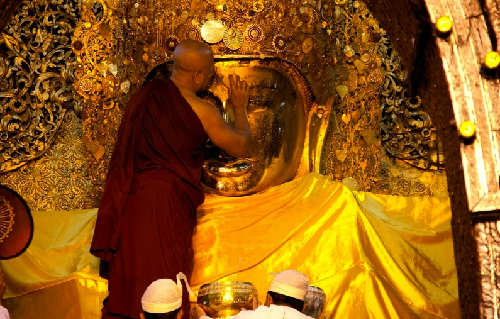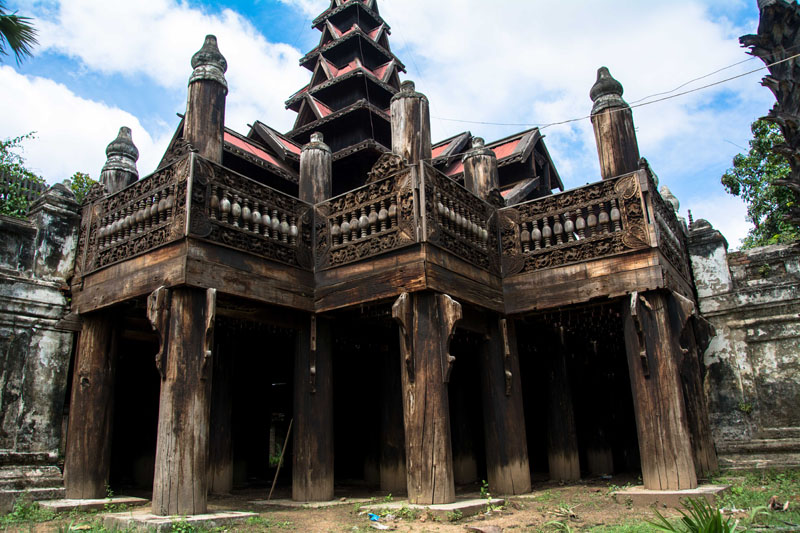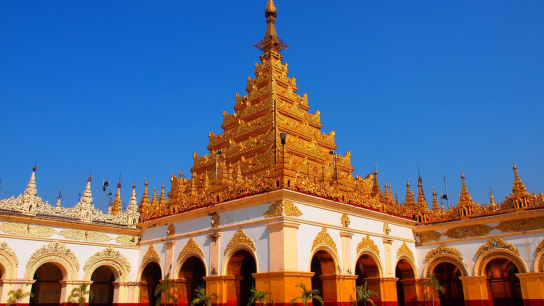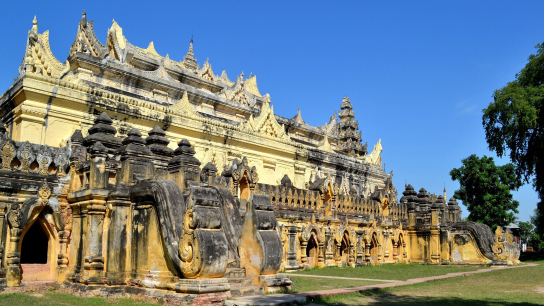Mandalay - Travel back in time to the Ancient Capital
If you are travelers who love unique beauties, adventurous experiences, and a little bit classic, Mandalay will be the ideal destination for setting off your foot and do not come too late.
The most exciting experiences that attract travelers to come here are admiring the classic beauty of the temple, streets and feeling the peace. Although in recent years, Myanmar has many policies to welcome tourists from other countries, this country still has not yet focused on tourism. Therefore when coming here, you will have a feeling like you are the first person in other places exploring a new mysterious place. Besides, Myanmar tourism is also voted by many famous magazines as a favorite destination that almost all travelers should not miss.
Mandalay is located in the central of Myanmar and this is the last capital of Myanmar Royal. Maybe it is famous as a complex city but when you leave the bustling downtown area to visit the grandiose architecture buildings and at that time, you will really understand more about the beauty of the land which is the ancient capital of the Golden- temple country.
“Buddha face cleaning ceremony” at Mahamuni Phaya
The first place in my Mandalay journey is Mahamuni Phaya, According to the Bhasa language, “Mahamuni” means “Great Sages” and “Phaya” means “temple”. Mahamuni Phaya was built in 1784 with a bronze Buddha statue, 4 meters high and weighs 6.5 tons.
For expressing the piety and strength of the power, King Sanda Thurija used to inlay gold into the statue. These customs have been executed over many generations so until now, this statue is bigger and bigger by the thick gold layer that estimated 15cm.
Mahamuni pagoda has 4 sides with long corridors. In the middle of the main sanctum, there is a golden Buddha statue but only men are allowed to walk nearby, touch, and stick gold on the statue. Women are forbidden to approach the statue and can merely bow and pray behind fences.
According to local residents, only monks with high status, great righteousness, and generosity in the Buddhist Sangha of Mandalay are permitted to do the cleansing ceremony.

Cleaning Buddha face
The beauty of U Bein Bridge
The second destination in our journey is U Bein Bridge which was built in the 1800s by people living in an ancient village called Amarapura. It is comprised of thousands of teakwood plankings with 1086 pillars. This is the oldest and most valuable bridge in the world. Coming here, watching sunrise or sunset on the bridge must be one of the most memorable experiences in Mandalay.

Beautiful sunset on U Bein Bridge
Sagaing Hill – The place of Saints
Sagaing Hill is about 20 kilometers to the southwest of Mandalay. In the past, Sagaing was the capital of Shan Kingdom which was only lasted for a short time. Sagaing Hill is known as the religious center of Myanmar with more than 400 monasteries stretching along numerous hills. On the way climbing up, there are stone chairs for visitors to take a rest. From Sagaing’s top, you can see a magnificent overview of the land, Irra Wady river – the longest river in Myanmar that flows windingly around the hills; pagodas and temples lie under green woods.

Sagaing Hill
Inwa – the 400 years old ancient capital
It must be a shortage if you visit Mandalay without going to Inwa, an ancient village located at the confluence of Ayeyawaddy and Myitnge river.
The city looks like an island in the middle of Ayeyawaddy and a channel; therefore, the merely way to reach the destination is by boat. After that, you can hire a horse-drawn carriage to visit around the city in 3 hours for $8.
In Inwa, there is a very unique monastery named Bagaya which has 267 giant teakwood pillars. Next to Bagaya is Mahar Aung Mye Bon San monastery or Brick monastery. This building was constructed in 1822 by Nanmadaw Me Nu, the Queen of Bagyidaw Dynasty.
In order to see the full overview of Inwa, you should go to Nanmyin watchtower which was built with stones. Climbing up each step of the stair, beautiful scenery gradually shows up with green and red rooftops of temples fading in the sunlight.

Bagaya Monastery
Getting amazed by the ruins of Mingun
From the Mandalay marina downstream of Ayeyarwady to Mingun, both sides of this river are covered with a desert of sand and concentrated with ancient temples. After an hour, the boat will reach the Mingun village. You will see many “buffalo taxis” that could take 5 people on them and go around the village with just 5 USD.
The ruin of Mingun Pathodawgyi is the red-brick temple. In the past, if it was completed, it would be the largest Buddhist architecture by brick in the world with an estimated height of 150m. The temple was started to be built in 1790, under King Bodawpaya Dynasty. However, due to the weak economy, this great construction was halted in 1797 and unfinished forever when the King passed away in 1813. The Mingun ruin only was built with a height of 50m and 140 square meters of spread. Until 1838, an earthquake destroyed the temple, and the upper part of the temple was collapsed. However, today the Mingun Pathodawgyi still exists with amazing cracks.

Mingun ruins
Just a litter far from Mingun ruin is the Mingun bell tower - the biggest bell in the world that was cast for the Myatheindan temple but it has never been used.
Coming back to nearby the marina, you will see the white temple – Hsinbyume Paya. This temple was built in 1816 by Bagyidaw King to memorized his deceased queen. The temple also severely damaged by the earthquake in 1838 but was restored in 1874 by King Mindon. This temple is surrounded by seven white paint layers of the corridor that symbolize seven mountains surrounding Meru Temple as in legend. Before the temple gates, there is a couple of huge Chinthe (the animals with half lion and half dragon) and these statues are considered as treasure by standing to protect their land.
Those attractions listed above are the most famous ones in Mandalay but it must be wondering if you can explore other aspects of the city by yourself. Let's take a look at some of our Mandalay tours as suggestions for you!
Ha Trang
Image sources: Internet








